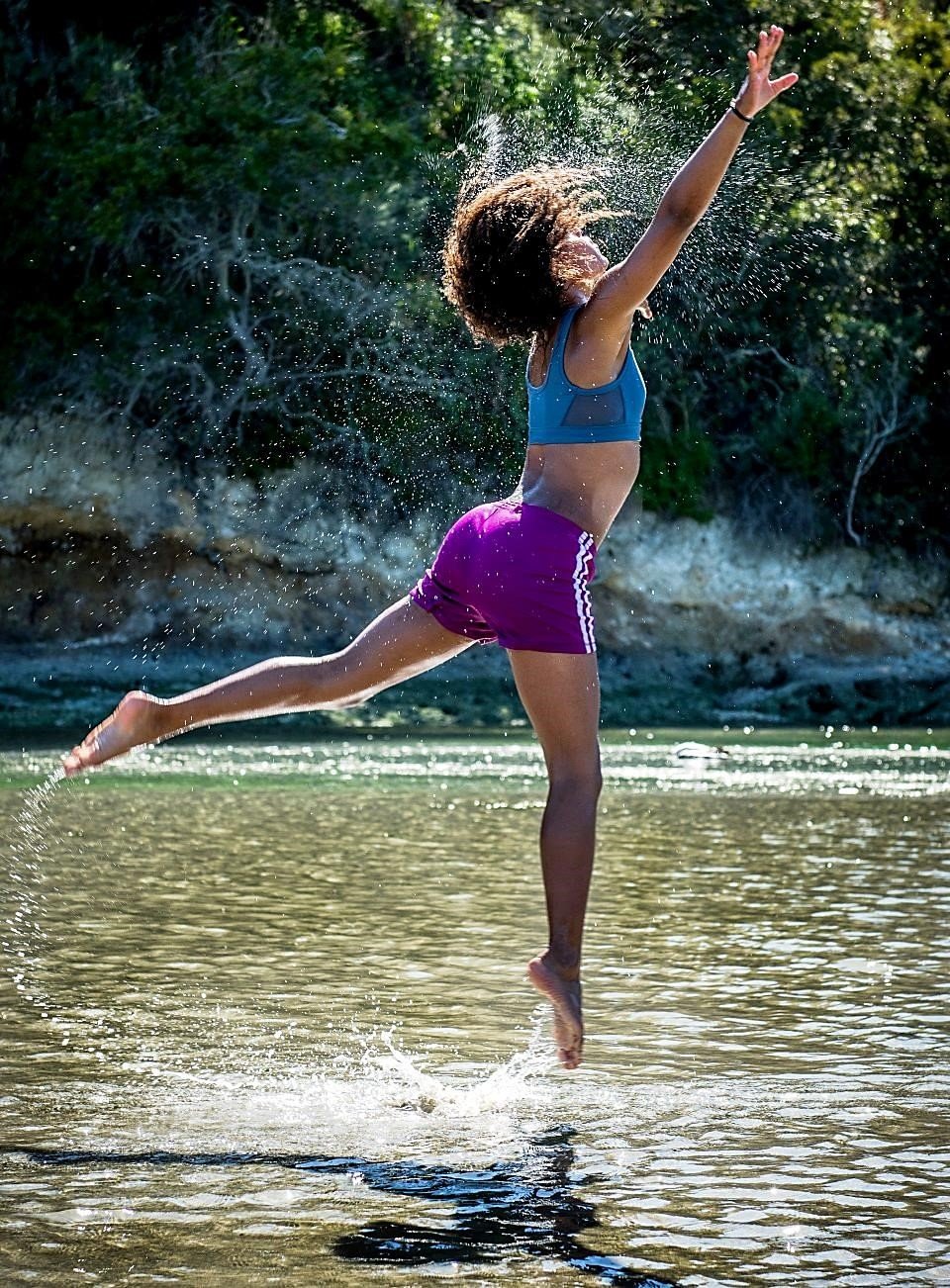
by Fern Shaw | Jul 28, 2021 | water cooler
After months of being cooped up, and for many without the capabilities to exercise or train at home, it’s no surprise we may all be feeling a little stiff and find even the simplest physical effort testing.
Stretching is possibly the simplest route back to feeling better and making it easier to up our sadly depleted fitness levels.
Sit and stretch. Working sitting at a desktop or looking at mobiles or tablets invariably leads to rounded, hunched shoulders, bent neck, hunched torso and legs locked in a seated position. Getting up, walking around and replenishing your drinking water is usually the best manner to counteract stiff muscles but even seated stretches are a good start. Stretching counteracts tight muscles and can improve overall posture.
Stretch before exercising. There’s good reason many fitness disciplines begin with a stretching routine. Our muscles tend to tighten into the position we’re in the most, the more sedentary we are, and the less range of movement we have. Stretching before exercise can also help decrease the likelihood of muscle strain or injury, as it brings blood flow to the muscles and helps warm them, decreasing tightness.
Increases and maintains a better range of motion. As we age, our joints lose range of motion. We can counteract this by stretching regularly. Even if range of motion in some joints is limited, stretching helps maintain a better range of motion.
Reduces back pain and decrease sore muscles. Poor posture in the upper back can lead to lower back pain as it tries to compensate. Tight hamstrings and leg muscles can also lead to lower back pain. When we stretch, the associated muscles to help improve/strengthen posture this helps decrease back pain.
How drinking water helps. Even at a cellular level, we need water to transport fluids that protect and lubricate our joints and muscles. Even mild dehydration affects our ability to bend, stretch and move. This is why it’s vital to make sure you maintain good hydration habits every day.
Help maintain good hydration by installing an AquAid Water Cooler. Our range of high-quality water dispensers is suitable for a constant supply of refreshing drinking water, no matter the size of your premises or staff contingent.

by Fern Shaw | Jun 23, 2021 | water cooler, Water Coolers
I looked up the 3 Laws of Energy in order to present them in this blog, however, my energy levels are somewhat reduced as I haven’t been drinking water as I usually do and it was a little more difficult than I thought to simplify what these laws entail.
What I do know is that all beings require energy in order to function. In order to function well, humans require fuel and we gain energy from consuming food. In order to extract energy from food, every single cell needs to activate in order for that food to process into energy. At the core of generating this energy, is water.
Water is essential for life – involved in many cellular functions, including energy production. By drinking water at regular intervals throughout the day, you’re already providing your body and brain with an energy boost. Not only does water help stimulate the organs responsible for the digestive function, it lubricates joints and muscles, plumps up our skin, keeps our eyes clear, promotes healthy blood circulation and overall helps our body function at its best.
If you would like to have a steady supply of refreshing drinking water at your convenience, speak to one of our knowledgeable experts at AquAid Water Coolers. We’d be delighted to assist.

by Fern Shaw | Oct 29, 2020 | water cooler
Every year, here at AquAid we (virtually) tiptoe as we edge towards mention of Halloween. Still not sure why, that’s just what we do.
Considering the events of this year so far, we reckon a timid or gung ho approach surely doesn’t matter – perhaps all we can say is that we think there’s been enough tricks, thank you kindly, so, for this Halloween, please, we’d just like the treats.
If it were your choice this Halloween to go all in with treating only, perhaps it would be a good idea to balance all the treats consumed with several healthy draughts of water.
Should you opt for a bit of both i.e. a few tricks doled out for good measure in amongst all the treats – fair play – again, remember to keep up with drinking water.
Although this year it’s unlikely there will be any actual door-to-door trick-or-treating or ‘guising, there’s no reason you can’t enjoy Halloween at home:
- Observe the first full moon since 31 October 2001. It’s actually a Hunter’s Moon and should occur at 2.49pm, but that’s okay. It’s a Saturday – you can get this Halloween party started early!
- Create a Halloween playlist and dance your ‘guise loose. Extra treats if you learn the ‘Thriller’ moves.
- If you’re brave, do the opposite of Netflix and chill. Queue the scary movies and ‘enjoy’. If scary movies aren’t for you, host a virtual Halloween party.
- Although we’re sure that you, like us, love the ghost beasties in the headline image, we’re not going to suggest costuming your pets. Think mayhem, confusion, possible broken household items. Yep, rather not.
However you choose to observe this rather special 31st of October, from us at AquAid we wish you all a Happy Halloween with more treats than tricks.

by Fern Shaw | Jul 22, 2020 | water cooler
Hydrate to break the cycle of stress. There’s no doubt that our stress levels have ramped up significantly this year. Where we are all doing all that we can to be kind, look out for and keep each other safe, dehydration can easily exacerbate stress. The quickest, simplest solution to counteract stress is to maintain good hydration.
As with your mug, ‘own’ your water glass. Wherever you’re currently working, invest in your own water glass. Whether it’s thick and chunky or tall and elegant, choose something distinctive. In-between drinking each glassful, leave it on your worktop. Begin a routine where each time you get up to stretch your legs or take a break, pick up your water glass and head to the water cooler to replenish your water.
Good hydration is the cheapest skin care available. Dehydration is quickly apparent in the condition of our skin. Irrespective of your level of health, your skin shows up dehydration levels through sagging, crinkly skin, flakiness and dryness. Moisturising your skin is always a good idea, but the best way to keep your skin plumped up and healthy is to drink water.
Make drinking water part of your daily routine, not part of your daily chores. In order to make this feasible, all that’s required is a mind shift reboot. Instead of resenting ‘having’ to drink water (an attitude I am sure applies to many of us), change your thinking. Whether it’s a glass (or two) of water before you begin breakfast, before you brush your teeth or before you make that first cuppa, make sure that drinking water becomes part of your everyday routine. It won’t be long before you notice the improvement in your general well-being.

by Fern Shaw | May 14, 2020 | water cooler
During these turbulent times, there has been a significant increase in the resurgence of board games – and one in particular seems to be the ubiquitous jigsaw puzzle.
According to Wiki, early jigsaws, known as dissections, were produced by mounting maps on sheets of hardwood and cutting along national boundaries, creating a puzzle useful for the teaching of geography.
You might well feel a sense of national pride whilst puzzling: it was indeed a Brit invented the jigsaw puzzle. A London engraver and cartographer John Spilsbury, is believed to have produced the first one around 1760.
As I sit near our water cooler (keeping it company) in-between replenishing my drinking water, I’ve noticed that jigsaw puzzles seem to be the preferred isolation game of choice. It isn’t hard to understand why – It’s a hobby that can be played be one person or many people together. Not only that, but puzzles help with reasoning, analysing, sequencing, deduction, logical thought processes, problem solving skills, hand-eye coordination, and spatial arrangements.
There seems to be distinct personality types when it comes to jigsaws. There are those that begin and fade fast; those who muddle through and then there are those paragons of determination and resolve who actually complete a jigsaw, despite the pure evil of the jokers, who, frustrated at not being able to go the distance, take it upon themselves to hide a few pieces from the puzzle solver.
To avoid this potential horror show, perhaps now is the time to marry this centuries old amusement with technology – in the form of microscopic locater chip in each piece that links to a lit numbered chart imprinted on the inside base of the puzzle box. If a piece goes missing, its light extinguishes until it’s recovered.
Did I just invent something? If so, get creating clever people – all I ask is credit for the idea. Happy puzzling!





